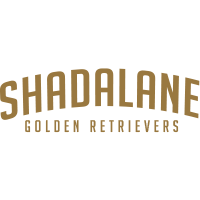FAQs
If you are looking for a pet for your family, or as your companion, it is of paramount importance to select the right breeder to at least direct you toward the right lineage, then to the right litter, and ultimately to the right puppy. It truly starts with the breeder. If you can find a breeder you can trust, who has a sufficient amount of experience and knowledge, and is avidly involved with showing and breeding show dogs, then you are taking the first step. Those who breed to improve on the lines they possess will breed in hopes to acquire that particular puppy who will win over other breeders and judges alike. It is a satisfaction that is rewarded from having the respect of the breeders in the golden retriever community. However, not all puppies in the litter can be kept by the breeders. Eventually, these puppies must find great, solid homes. Just because a breeder selects a particular puppy as third or fourth pick puppy in the litter, it does not mean that it lacks all the other DNA information passed down from generations upon generations of healthy champions whose owners loved and improved upon. Sometimes breeders may select a puppy to show in the litter because of certain anatomy angulations in structure or height in rear pasterns. Generally, the entire litter will share in the basic characteristics of substance, disposition, and coat type. The qualities in these characteristics usually outshine other litters that have been bred blindly and for profit.
The breed standard is a set of written guidelines put together by the Golden Retriever Club of America, the parent club of all golden retriever clubs in the United States, our national club. These guidelines help all breeders to conform to certain character features when breeding. It helps us to stay within certain height measurements, eye color, pigment color, and general disposition of the breed. Without such outlines, we would have an array of golden retrievers and no common objective when breeding.
These guidelines also help to assist AKC judges make their selections in competition. In turn, it conveys to the breeders which dogs comes closest to their interpretation of the Breed Standard. Top winning dogs and show champions are then highly considered as high quality breeding stock. Of course, they are all critiqued and scrutinized a million times over, but it serves the purpose in choosing the right dog when breeding. Which is why showing dogs in conformation is so important if one would like to breed.
The breed standard helps to impose and perpetuate the true character and type of the Golden Retriever. It also maintains the importance of function and purpose, which is essential to its history and origin.
My definition of structure is the anatomy of the canine species that relates to the overall health of the dog. Depending on the purpose of each breed, structure plays a key role in its intended use. Golden retrievers were originally bred to retrieve game in field and water. It is important that this trait is not lost in haphazard breeding practices by so many profit seeking breeders who do not participate in any of the AKC events. These breeders lack vital knowledge in their dogs’ pedigree and ultimately do not know what they are breeding. If these self proclaimed high quality breeders do not participate in AKC events, how well can they truly understand structure? Their strategy to purchase dogs out of champions to then breed the same dogs over again limits their abilities as breeders to minimize certain faults and frailties in structure from the breed as a whole. There are too many unwanted dogs and puppies in this world to produce more puppies just for the sake of making money. Dogs should be bred as an enhancement of its predecessors, so that we can enjoy and entertain its intended purpose and other assets that is beneficial to its families.
Retrieving game on land or water requires more than just four legs, a tail, and teeth. There are so many specific anatomy traits that help the endurance level of a dog, as well as overall health. For example, a well sprung rib cage and depth of chest can actually allow for more lung capacity. A well placed shoulder can ease more comfort in a dog trotting all day. A thick tail base is an important rudder appendage. These are just a few examples of what is truly needed in the breed, which most self proclaimed breeders do not know. It is important to know that if your breeder does not know structure and the written standard, then your breeder is pretending to be a breeder and has made a lot of money with no regard to improving the breed, but their bank account.
OFA is an acronym for The Orthopedic Foundation for Animals. It is an organization developed in 1966 to study, record, and limit the widespread disease of hip dysphasia. Today, it has grown to help prevent genetic hip and elbow dysplasia through radiographic screenings. OFA also provides evaluations on ultrasonic screenings for heart abnormalities, such as SAS. Without the assistance of OFA, most of all the AKC recognized breeds would suffer widespread decline in healthy and happy dogs.

